Hop Tokens
Hop Tokens
The series which is known in the numismatic fraternity today as hop tokens is associated almost exclusively with Kent and East Sussex and with the period c.1770 to the outbreak of the Second World War; however, several other areas are known to have grown hops and a useful reference to these is given in the bibliography at the end.
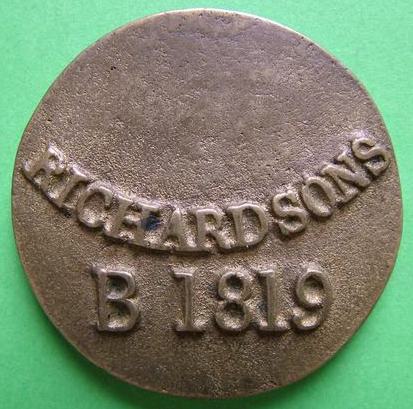
Early hop tokens were made in lead, moving gradually in the early 19th century to the white metal alloy which predominates; whilst miscellaneous specimens in other metals such as brass, bronze, copper and zinc appear in smaller numbers. In one case the metal of a church bell, which had become too damaged for further use, was recycled for the purpose. Exceptionally, other, non-metal materials were used; cardboard and paper in more modern times, and, on one earlier set c.1810, bone.
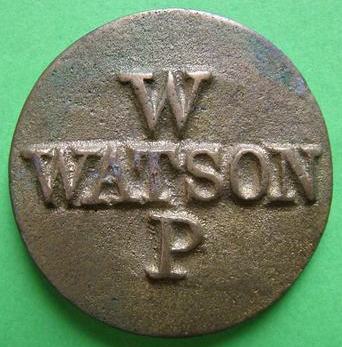
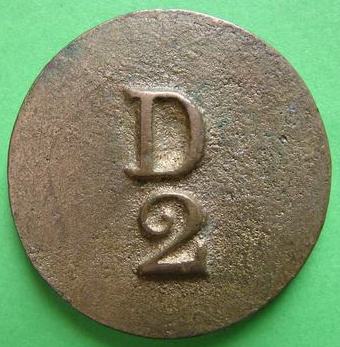
The latter is believed to have been produced by Napoleonic prisoners of war.
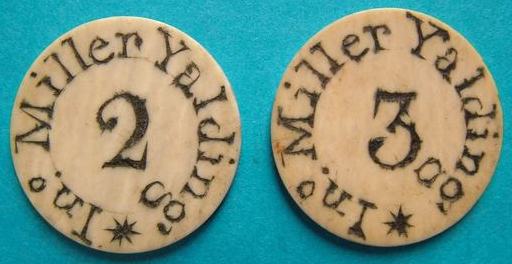
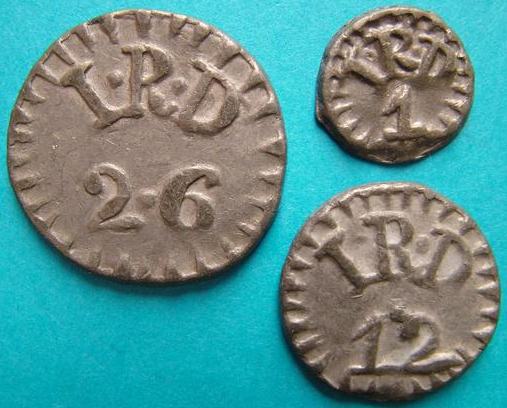
Nearly all have one or more issuers’ initials on them, and some of the larger pieces their full names and, occasionally, locations. Because they were of very local usage, the issuers can often be deduced by local historians from the findspots even though they may not actually be stated.
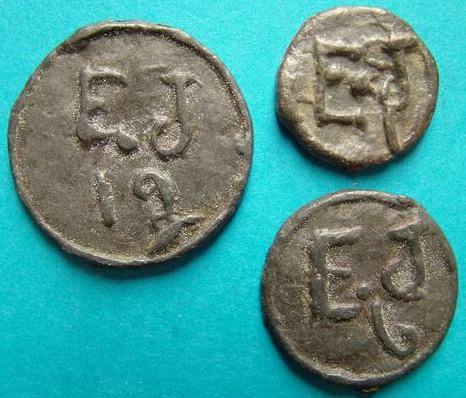
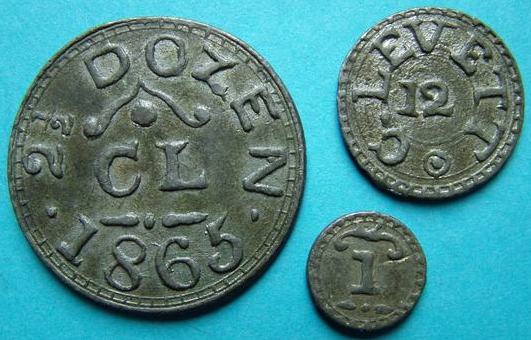
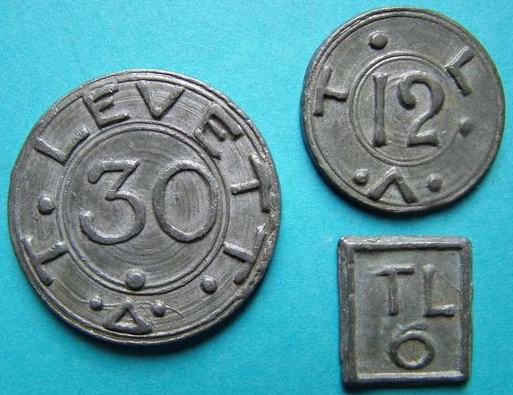
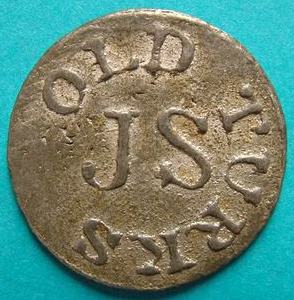
Although some series are common, others are known only by certain values, and new types and values are still coming to light.
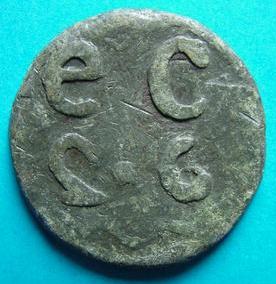
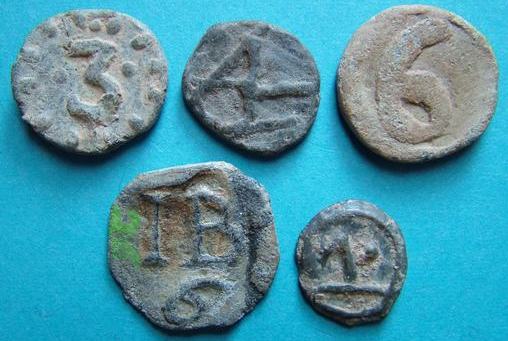
Hop growing was not confined to the above period and it may reasonably be conjectured that some sort of token currency was often in use before and after; e.g. anonymous crude lead before and, more recently, tin bracteate or cardboard tokens in the early-mid 20th cent. This applies to other crop growing areas as well, apart from Kent and East Sussex. Shown to the left are a group of crude lead pieces of unknown origin which sit on the boundary of the two series, exhibiting some of the features of early hop tokens and which are probably their early-mid 18th cent precursors.
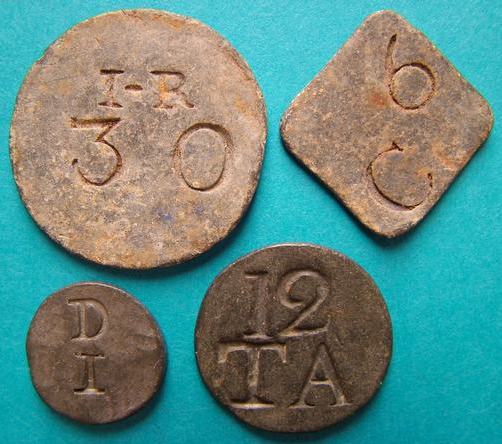
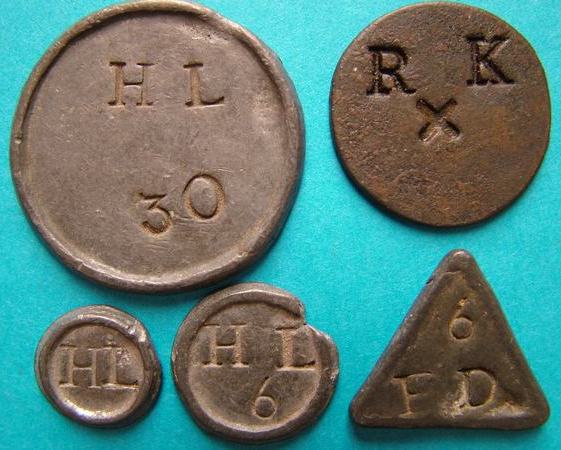
Significant numbers of both cast and struck pieces exist, with the cast predominating; also, there are quite a large number of cases where there is no design and all the necessary detail was inserted by counterstriking on blanks.
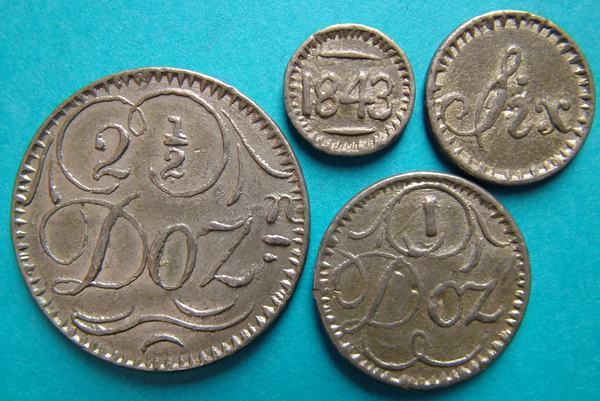
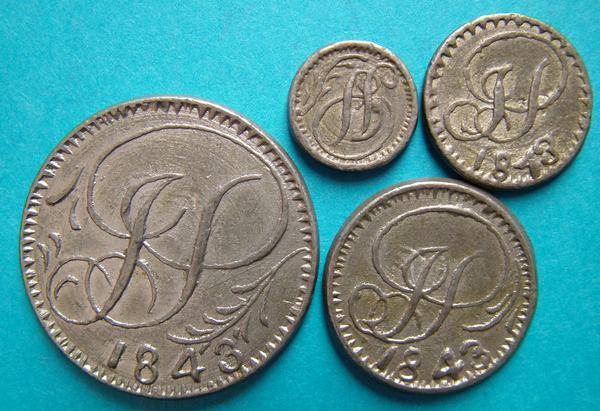
The available local labour force was numerically inadequate for the hop-picking industry in during the few weeks at the height of the season, and for this reason it was augmented for many years by inhabitants of the East End who treated a few weeks of casual agricultural labour as a holiday from their normal urban pursuits. This influx required considerable administration, for which the employers used a combination of notched tally sticks and tokens in a manner which differed from area to area; East Kent, Mid Kent and East Sussex all had their own approaches, described in more detail in Duncan Pennock’s article referenced below, and in consequence several different series of tokens evolved:
1,3,6,12,30,60,120 or 1,3,6,12,24,48,72,120, indicating either bushels or pence {higher values sometimes rendered in shillings}
1,2,3,/.N, where N was the size of the receiving basket in bushels.
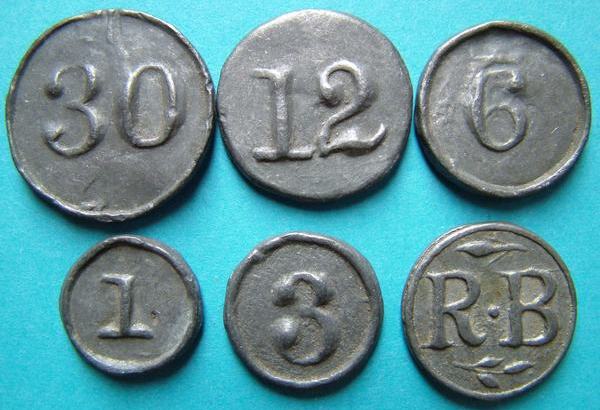
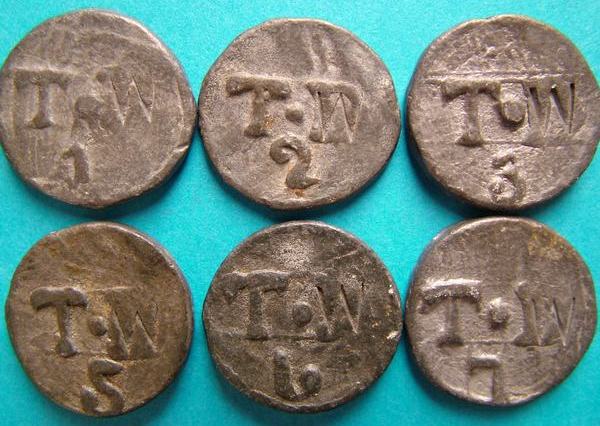

Tokens would be used as an on-the-job currency, for recording either a person’s overall production or as a way of indicating what proportion of a basket they had filled at the end of a shift, thus restricting the need for actual transaction of official coin to a few agreed payment days. The use of bushel-valued tokens also allowed for a fluctuating conversion rate whereby rewards could be varied according to the quantity and quality of hops picked, enabling the same tokens to be used in a good season as a bad one.
Many of the early lead pieces would have been produced by the local blacksmith and, the lower values especially, often bore no ornamentation whatsoever; even the higher values were fairly plain.
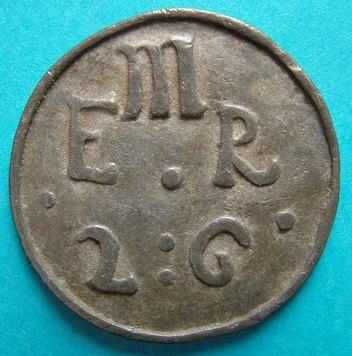
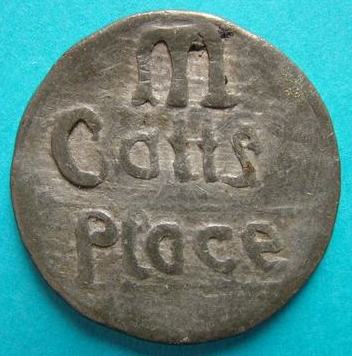
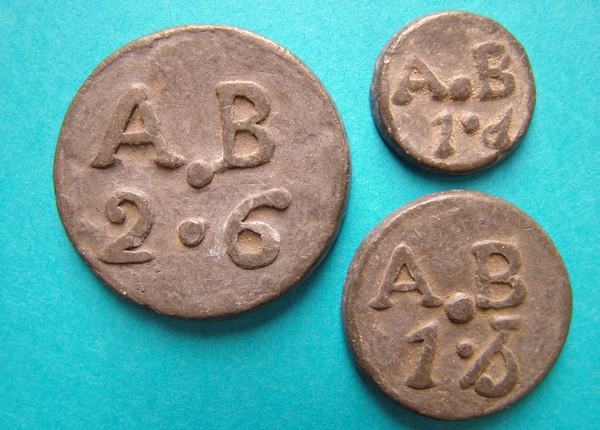

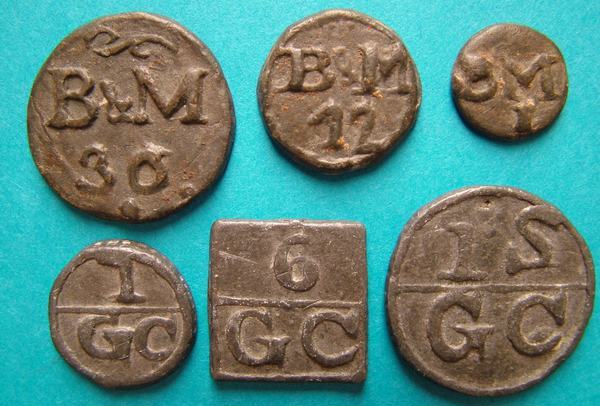
The high quality white-metal pieces produced in later years by the local Comports Engineering works at Northiam, however, were more inventive; their decorative and occasionally pictorial high value pieces are the most attractive of the series. They bear dates more often than any other types, usually in the range 1835-75, and most often depict arrangements of script and foliage, or occasionally a shield; but here and there, some such pictorial as an oast house or running hare appears. These latter pieces are the most sought after.
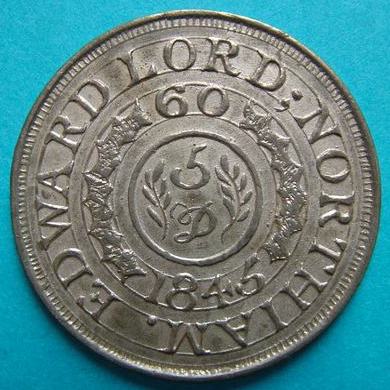
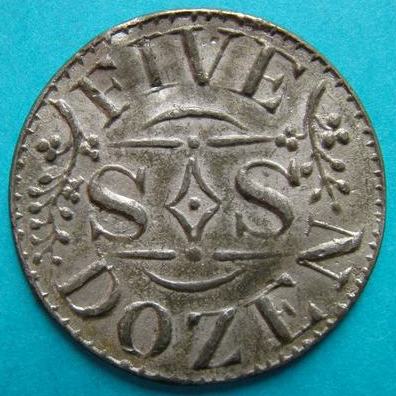
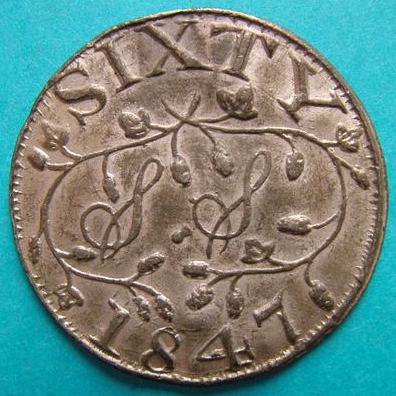
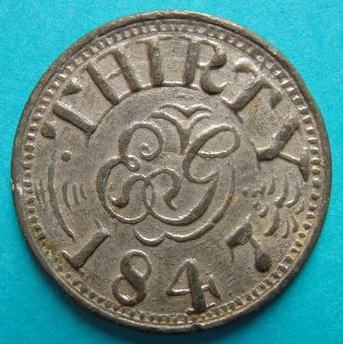
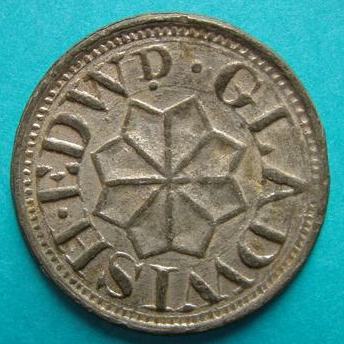
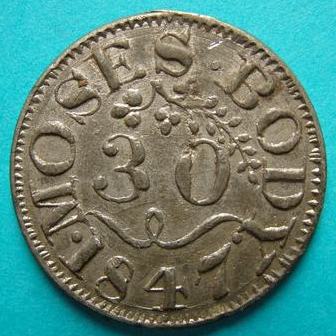
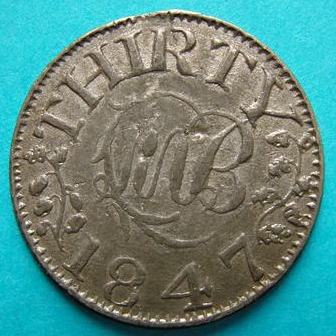
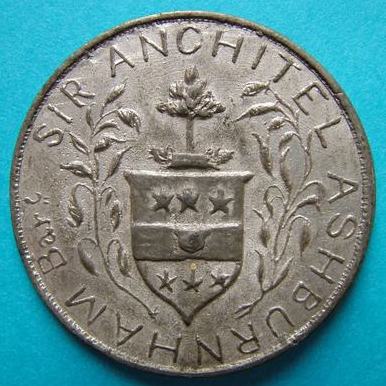
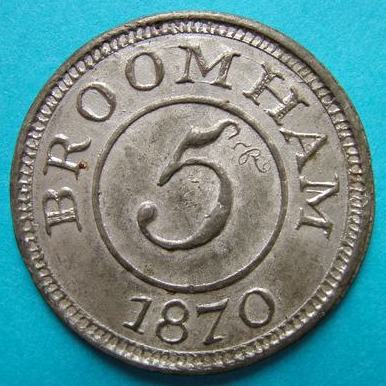
Most often the issuers were ordinary farmers, but here and there a minor aristocrat issued something more exotic, out of keeping with the general run, to make his presence felt the occasional presence of heraldry is a feature to look out for.
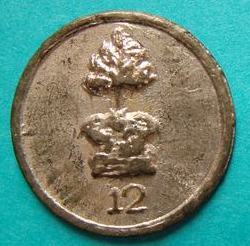
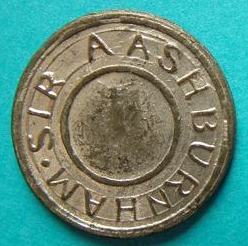
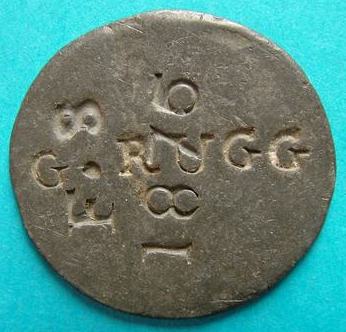
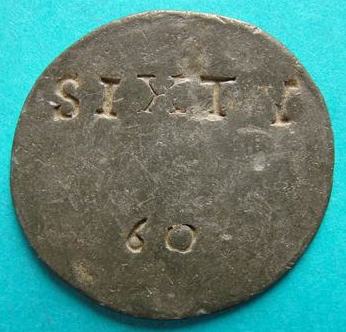
At the opposite end of the range, multiply counter-struck pieces with two or more sets of initials are interesting for their illustration of change of ownership; whilst pieces like the illustrated 60 bushel and five shillings exhibit the ultimate in crude do-it-yourself-manship.
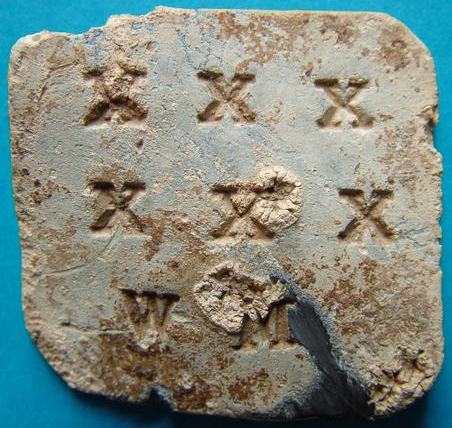
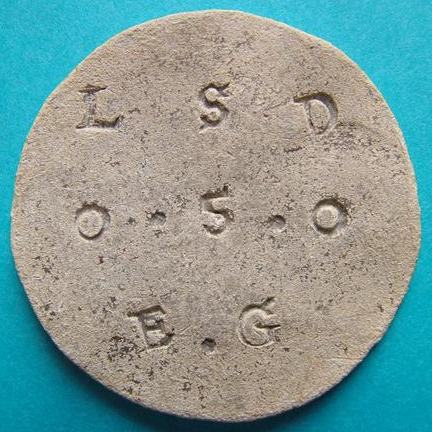
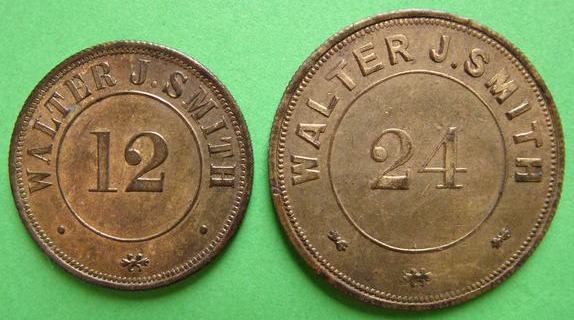
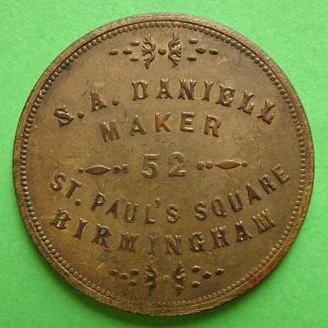
Only rarely were well-known Birmingham manufacturers commissioned to produce fine quality copper or bronze, as in Walter Smith’s pieces by Daniell.
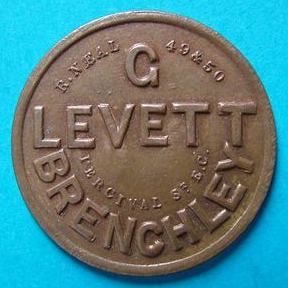
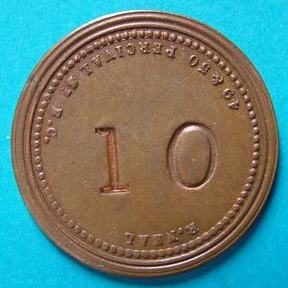
The decline of hop token usage roughly declined with the widespread replacement of white metal token usage by brass, and only at the very end did a new generation of makers like the Neals, better known for their market checks, make their appearance. By WW2, increased literacy had largely caused tokens to give way to written methods of accounting and payment, like pickers books, and hop tokens fell into disuse.
-:-:-:-:-:-
Literature:
Alan C. Henderson’s "Hop Tokens of Kent and Sussex and their Issuers" {Spink 1990} is the standard reference work, and more recently he has published "Hop Token Issuers and their Tokens" {four volumes so far, ongoing}, in which he explores more of the background history of the often interlinked farming families.
A more detailed description of hop token usage is contained in Duncan Pennock’s guest article in Vol.31 {Oct 2007} of David Powell’s lead token newsletter {www.leadtokens.org.uk}, whilst the article by D.C.D.Pocock entitled "Some Former Hop-Growing Centres" in the journal of the British Agricultural History Society {Vol.13.1, 1965, page 17; http://www.bahs.org.uk/} is useful for its suggestions as to what other hop farming areas flourished at what dates.
David Powell
